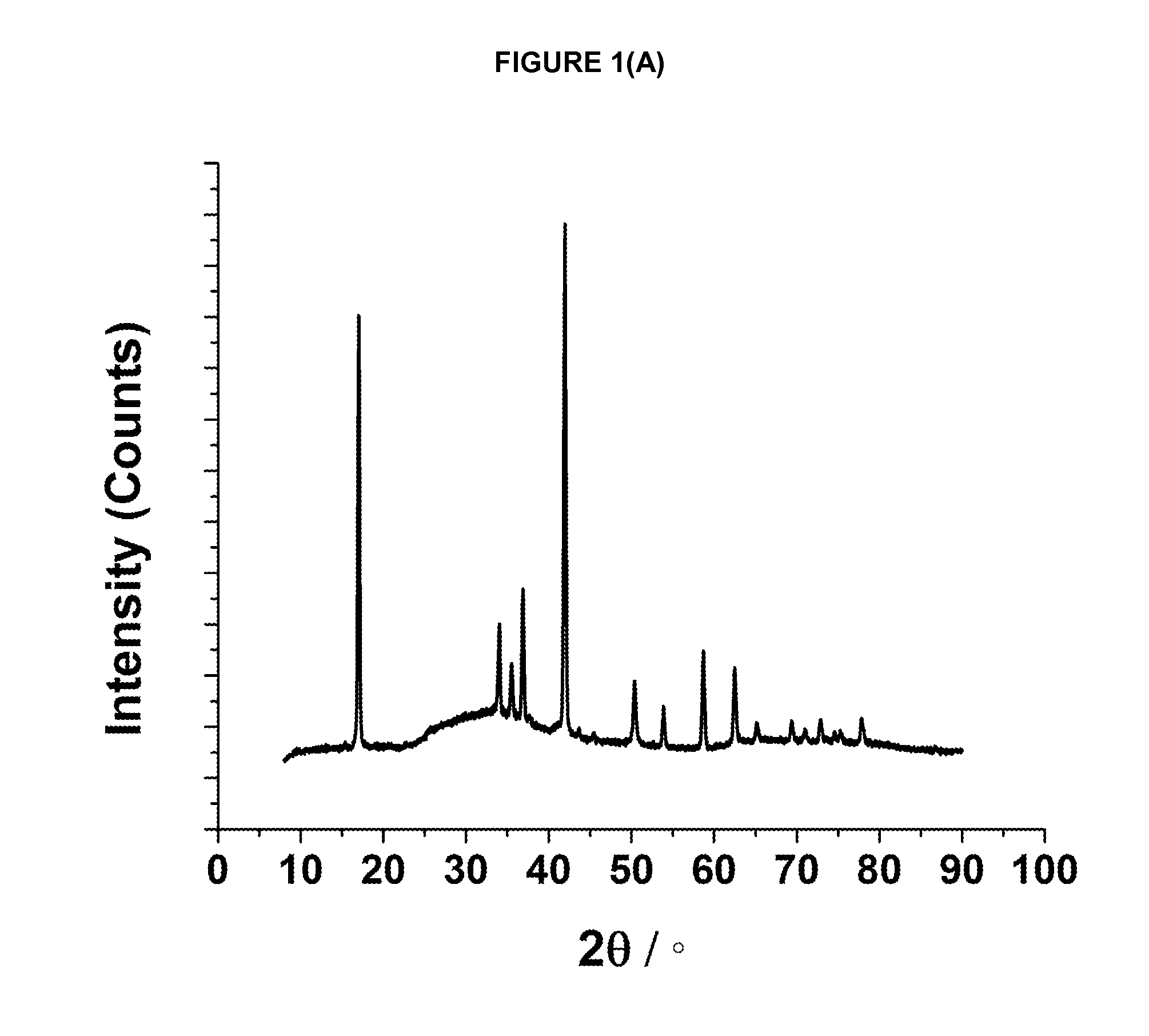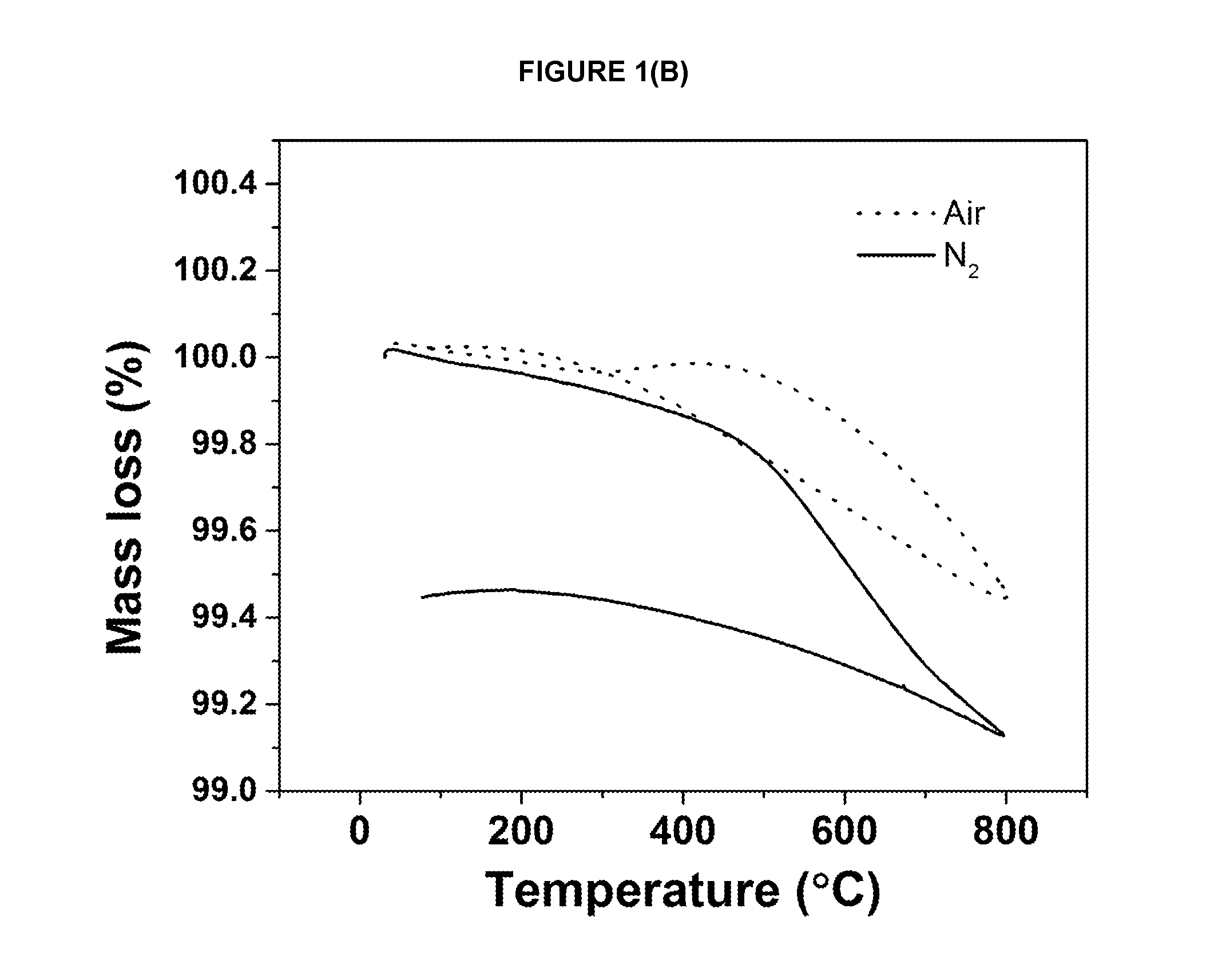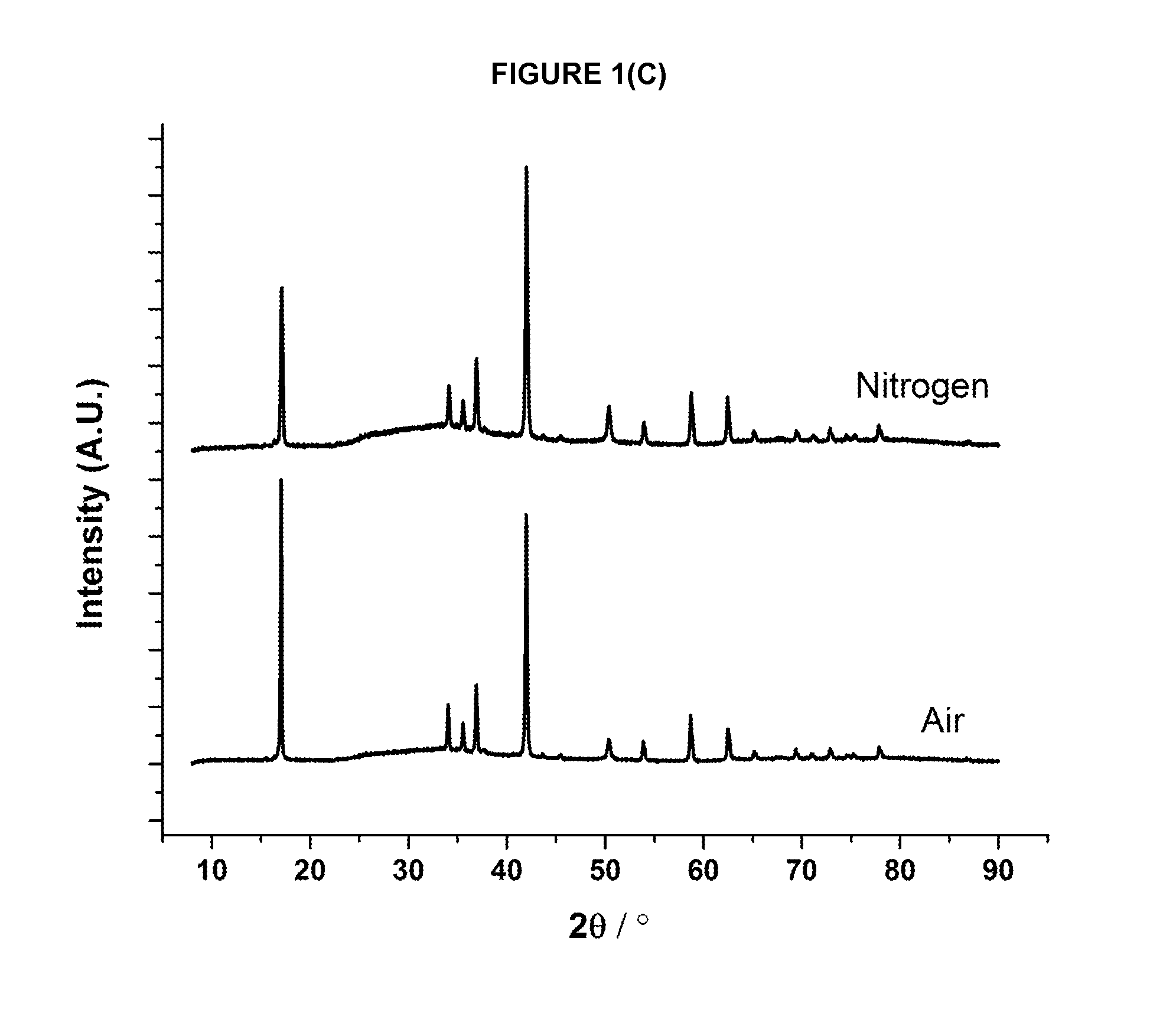Layered oxide materials for batteries
a technology of layered oxide materials and batteries, applied in the field of electrochemicals, can solve the problems of 25% or more of the capacity of the material, not cheap or abundant lithium, and the inability to meet the requirements of rechargeable battery technology,
- Summary
- Abstract
- Description
- Claims
- Application Information
AI Technical Summary
Benefits of technology
Problems solved by technology
Method used
Image
Examples
Embodiment Construction
[0216]The materials according to the present invention are prepared using the following generic method:
[0217]Synthesis Method:
[0218]The required amounts of the precursor materials are intimately mixed together and either pressed into a pellet or retained as a free flowing powder. The resulting mixture is then heated in a tube furnace or a chamber furnace using either an ambient air atmosphere, or a flowing inert atmosphere (e.g. argon or nitrogen), at a furnace temperature of between 400° C. and 1500° C. until reaction product forms; for some materials a single heating step is used and for others (as indicated below in Table 1) more than one heating step is used. Different cooling protocols can be used to induce oxygen non-stoichiometry in the materials. Sample may be heated and cooled under different atmospheres as indicated in table 1. When cool, the reaction product is removed from the furnace and ground into a powder prior to characterisation.
[0219]Using the above generic method...
PUM
| Property | Measurement | Unit |
|---|---|---|
| charge neutrality | aaaaa | aaaaa |
| storing energy | aaaaa | aaaaa |
| charge balancing | aaaaa | aaaaa |
Abstract
Description
Claims
Application Information
 Login to View More
Login to View More - R&D
- Intellectual Property
- Life Sciences
- Materials
- Tech Scout
- Unparalleled Data Quality
- Higher Quality Content
- 60% Fewer Hallucinations
Browse by: Latest US Patents, China's latest patents, Technical Efficacy Thesaurus, Application Domain, Technology Topic, Popular Technical Reports.
© 2025 PatSnap. All rights reserved.Legal|Privacy policy|Modern Slavery Act Transparency Statement|Sitemap|About US| Contact US: help@patsnap.com



